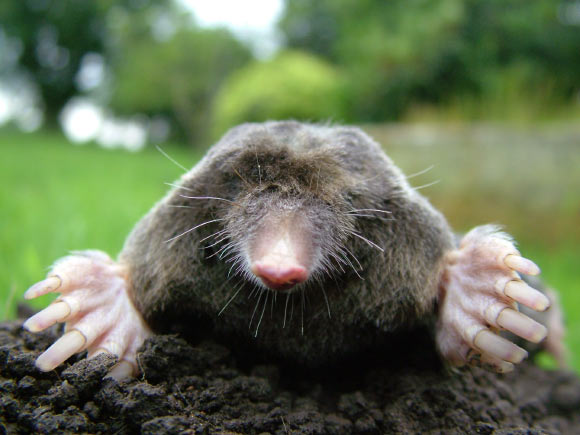European moles (Talpa europaea) appear to avoid chewing on sand when eating earthworms because it is likely that they find the sensation as repulsive as humans, according to new research from the University of Leicester.
Professor Mark Purnell and colleagues studied European moles from sites across Norfolk, the United Kingdom, to answer the question: does the sandy diet of these underground-dwelling mammals mean that their teeth show evidence of excessive scratching and wear?
They discovered that no matter how much sand was in the soil or how much ended up in their stomachs, the scratches, or microwear, on the moles’ teeth remained the same.
In fact, there were similarities to the teeth of other small mammals, such as bats, that eat only soft foods, like moths and butterflies.
“The findings suggest that, although moles clearly consume sandy food, they somehow avoid crunching and chewing on it, probably because, like us, they find it unpleasant,” said Professor Purnell, a researcher in the School of Geography, Geology and the Environment at the University of Leicester.
“This makes sense biologically: chewing on sand every day would rapidly destroy their teeth.”
“Our results support the idea that we can analyze patterns of microwear as evidence of what an animal has been eating and gives us confidence that we can use it to understand the diets of fossil mammals.”
Professor Purnell and co-authors also found similarities in tooth microwear in mammals that lived around 200 million years ago (Jurassic period) in what is now Wales.
One of these Jurassic mammals, called Kuehneotherium, was previously thought to eat soft, winged insects, but this latest research reveals that Kuehneotherium could have foraged for soft prey within the soil too.
“A lot of fossil mammals are only known from their teeth, so it can be difficult to know what they were like as real, living animals,” said Neil Adams, a Ph.D. student in the School of Geography, Geology and the Environment at the University of Leicester.
“From our comparisons of tooth microwear, we were unable to rule out mole-like diets for Kuehneotherium.”
“This suggests Jurassic mammals that lived alongside dinosaurs could have eaten worms, and not just insects as previously thought.”
The research was published in the journal Palaeogeography, Palaeoclimatology, Palaeoecology.
_____
Neil F. Adams et al. Dietary signals in dental microwear of predatory small mammals appear unaffected by extremes in environmental abrasive load. Palaeogeography, Palaeoclimatology, Palaeoecology, published online July 24, 2020; doi: 10.1016/j.palaeo.2020.109929








